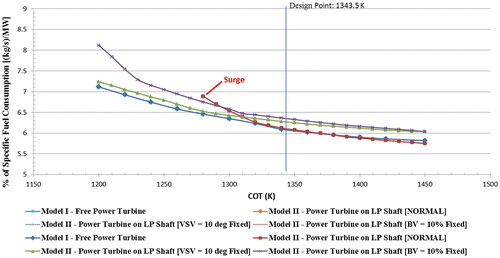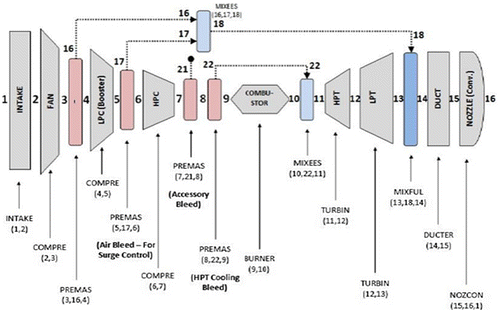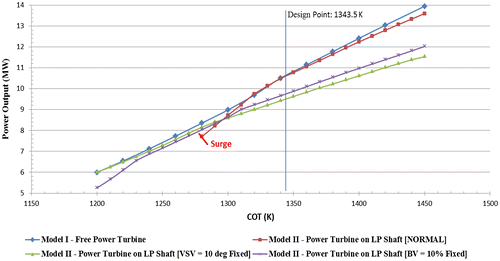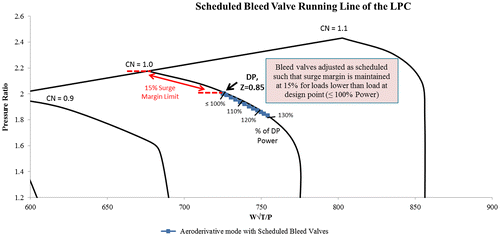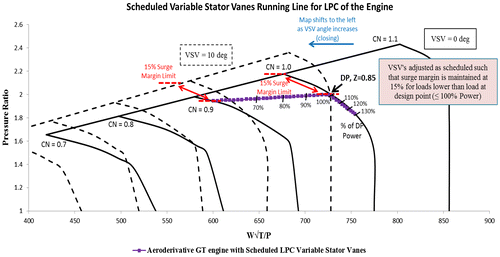Figures & data
Table 1. Turbomatch inputs for design point and cruise conditions (Palmer, Citation1999; Roux, Citation2011; Walsh & Fletcher, Citation2004)
Table 2. Assumed values for the turbofan turbomatch simulation related to GT models (Lefebvre, Citation1998; Nkoi et al., Citation2013a; Palmer, Citation1999; Sethi, Citation2014)
Figure 2. Block diagram of aeroderivative and turbomatch brick arrangement for (a) and (b) Model I—Two-spool with FPT, (c) and (d) Model II—Two-spool with integrated power turbine on LPS, and (e) and (f) Model III—Single spool with FPT.
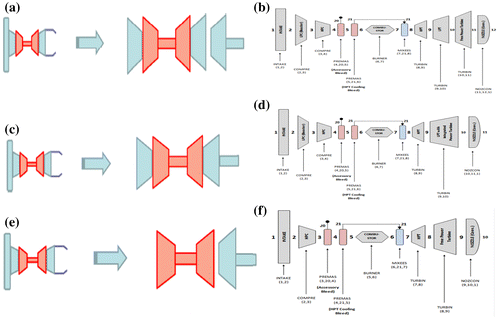
Table 3. Comparison of simulated results for the HPTE with published data (CFM International, Citation2000; Palmer, Citation1999; Roux, Citation2011; Safran Snecma, Citation2011)
Table 4. Comparison of simulated results at DP for the aeroderivative Models I, II & III
Figure 4a. Part-load performance (off design): thermal efficiency vs. combustion outlet temperature.
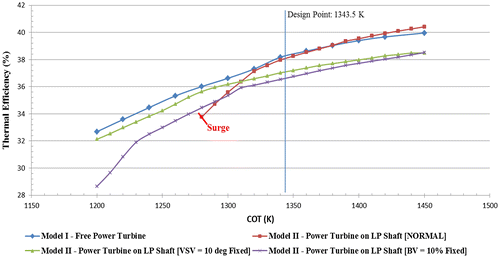
Figure 4b. Part-load performance (off design): specific fuel consumption vs. combustion outlet temperature.
